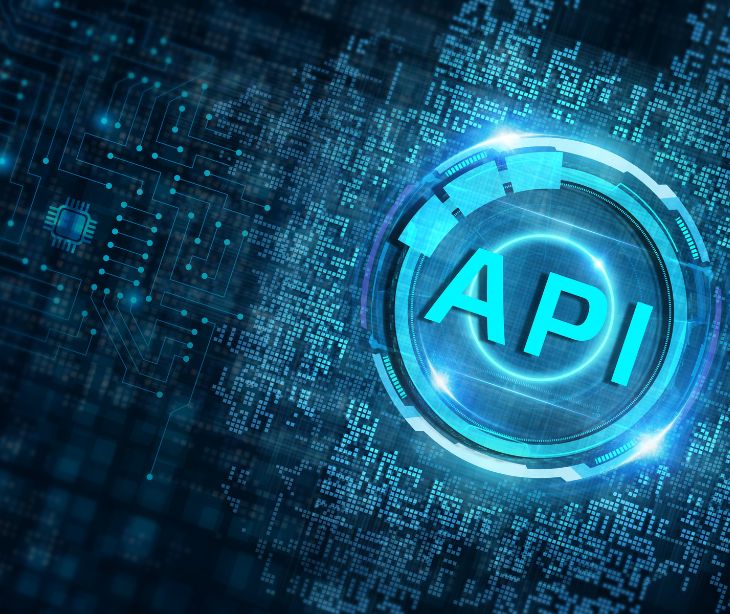
API stands for application programming interface. An API is a set of rules and protocols that enable different software components to interact and communicate with each other. It acts as an intermediary that allows applications to access and use services, data, and functionality provided by other applications or systems.
Think of an API as a contract or agreement between two applications. It defines how the applications can communicate with each other, specifying the expected requests and responses. This contract ensures that the interaction between applications is simple and standardized.
How do APIs Work?
To understand how APIs work, let's consider a real-world example. Imagine you have a weather app on your phone that provides you with daily weather updates. The data for this app comes from the weather bureau's software system, which contains a vast amount of daily weather information.
When you open the weather app, it "talks" to the weather bureau's system using APIs. The weather app requests the API to ask for the current weather data. The API processes this request retrieves the relevant data from the weather database and sends it back to the app in a format that the app can understand.
APIs in healthcare
Cleanthe (Cleo) J. Kordomenos, MPH, a public health policy professional at ATI Advisory, shows the relevance of APIs in healthcare: “If you are like the majority of the population, not aware of how technology works but still using it in every facet of your life, then odds are you have not heard of application programming interfaces,” she says. Yet, APIs are part of everyday life, often unnoticed. “Let’s say you are on the Yelp app looking for nearby restaurants to eat at, and Yelp displays nearby options through Google Maps. Boom. APIs in action.”
Cleo explains how APIs impact healthcare users differently: “If you are a patient, APIs can offer you easy and efficient access to your data. If you are a provider, APIs offer innovative user interfaces and analytics platforms that support you in your clinical decision-making process.” For researchers, “APIs offer easier access to detailed clinical and claims data to facilitate the research process.”
Types of APIs
There are several types of APIs, each designed for different purposes and scenarios.
SOAP APIs
SOAP (Simple Object Access Protocol) APIs use XML (Extensible Markup Language) to exchange messages between the client and the server.
RPC APIs
RPC (Remote Procedure Call) APIs allow the client to invoke a function or procedure on the server and receive the output as a response. This type of API enables remote execution of code and is often used in distributed systems.
WebSocket APIs
Websocket APIs support two-way client and server communication, allowing real-time data exchange. This modern web API development uses JSON (JavaScript Object Notation) objects to pass data.
REST APIs
REST (Representational State Transfer) APIs are the most popular and widely used APIs on the web today. They follow a set of architectural principles and use HTTP (Hypertext Transfer Protocol) for communication. REST APIs are flexible, scalable, and can be easily integrated into various applications.
Read more: What is HTTP?
Scope of APIs
APIs can be classified based on their architecture and scope of use:
Private APIs
Private APIs are internal to an enterprise and are used for connecting systems and sharing data within the business. These APIs are not exposed to the public and are primarily used for internal integration and automation.
Public APIs
Public APIs are open to the public and can be used by anyone. These APIs are often offered by companies to enable developers to access their services, data, or functionality. Public APIs may have certain authorization requirements or usage limits.
Partner APIs
Partner APIs are accessible only to authorized external developers. These APIs are used to facilitate business-to-business partnerships and collaborations. Partner APIs enable secure and controlled access to specific functionalities or data for trusted partners.
Composite APIs
Composite APIs combine two or more different APIs to address complex system requirements or behaviors. These APIs aggregate data or functionality from multiple sources, providing a unified interface to clients.
In the news: API vulnerabilities
In late 2024, cybercriminals exploiting DocuSign’s Envelopes API, a system that businesses use to send and manage documents for electronic signatures, to distribute fake invoices that appear to come from trusted companies like Norton and PayPal. These fraudulent invoices are sent from DocuSign’s official domain, docusign.net, allowing them to bypass traditional email security filters. The attackers use the API to create invoices that look legitimate enough to trick recipients into taking action, such as making payments.
Paubox Email API: A HIPAA compliant solution
Send HIPAA compliant emails through your own applications or third-party software:
- Our HIPAA compliant email API integrates with your applications for secure email delivery.
- Paubox Email API was developed specifically for software developers and healthcare organizations utilizing third-party or custom software.
- Securely send HIPAA compliant emails via our HITRUST CSF-certified email API solution.
- Focus on your product: You build. Let us maintain the HIPAA compliant email infrastructure. Get to market faster by quickly integrating a secure, seamless email product that works equally well on desktops, laptops, smartphones, tablets, and wearables.
- Compliant and secure: Maximize security by enforcing the TLS encryption protocol by default for every email sent. Paubox Email API is HITRUST CSF certified in adherence to the most rigorous standards of HIPAA compliance. A business associate agreement (BAA) is available to every customer.
See also: HIPAA compliant email API
FAQs
How do healthcare APIs improve data exchange between systems?
Healthcare APIs enable simple communication and data exchange between systems, such as electronic health records (EHRs), insurance platforms, and laboratory information systems. APIs allow healthcare providers to access and share patient information more efficiently, improving coordination of care and reducing administrative burdens.
Are APIs in healthcare HIPAA compliant?
Yes, APIs in healthcare can be designed to be HIPAA compliant. To meet HIPAA regulations, healthcare APIs must ensure that data is encrypted, access is controlled through strong authentication methods, and audit trails are maintained to track who accesses sensitive patient information. These features ensure that APIs protect patient data while allowing secure and efficient data transfers.
What challenges do healthcare providers face when implementing APIs?
One of the primary challenges healthcare providers face when implementing APIs is ensuring interoperability across different systems and platforms. Many healthcare organizations use a wide range of software applications, such as EHRs, patient portals, and billing systems, which may not be designed to work together seamlessly. Additionally, maintaining compliance with privacy regulations like HIPAA and ensuring that APIs are secure from cyber threats can also present challenges. Proper integration, staff training, and continuous monitoring are necessary to address these hurdles and ensure the smooth operation of API systems
See also: HIPAA Compliant Email: The Definitive Guide
Subscribe to Paubox Weekly
Every Friday we'll bring you the most important news from Paubox. Our aim is to make you smarter, faster.




